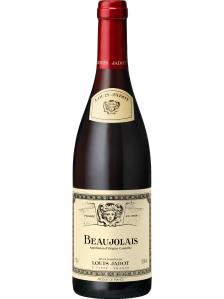Beaujolais is an important wine region of eastern France, famous for its vibrant, fruity red wines made from Gamay. It is located immediately south of Burgundy, of which it is sometimes considered to be a part, despite being within the Rhone administrative region.
The widespread plantings of Gamay here make Beaujolais one of the few regions of the world to be so focused on a single grape variety. Pinot Noir is used in small quantities in red and rosé wines, but in the name of regional identity it is being phased out and will be permitted only until the harvest of 2015. Although best known for its red wines, the region also produces white Beaujolais Blanc, from Chardonnay and Aligote. These two white-wine varieties are also sometimes used in the local red wines, in which they may constitute up to 15% of the final blend.
There are several forms of red Beaujolais wines: standard Beaujolais (including Beaujolais Superieur), Beaujolais Villages, and the characterful, youthful Beaujolais Nouveau. The region's highest-quality wines are those of the ten Beaujolais 'crus' – ten vineyard areas long recognized as the finest in the area. Each of these ten (Brouilly, Chenas, Chiroubles, Cote de Brouilly, Fleurie, Julienas, Morgon, Moulin-a-Vent, Regnie and Saint-Amour) has its own appellation title.
Beaujolais Superieur wines are standard Beaujolais wines which have been vinified to a higher level of quality, and made from grapes which have reached optimal ripeness. The extra sugars in the ripe berries are matched by extra care taken in the winery, and translate to a (legally required) extra half-degree of alcohol in the finished product. Grapes destined for Beaujolais Supérieur wines must have a potential alcohol of 10.5% when picked, rather than the standard 10%.
The Beaujolais region's rise to prominence began in the 19th Century, and was earned by its youthful, fruity nouveau wines. With no barrel ageing at all, these are sold and consumed only weeks after harvest, and are officially released on the third Thursday in November. Such fresh, vibrant wines proved very popular in 19th Century London and Paris, and were enjoyed through the winter months until their more serious, well-structured cousins were released onto the market (© Wine-Searcher Proprietary Content).
Beaujolais has a borderline continental climate, tempered by the presence of the Massif Central to the west and the Alps to the east. This provides a relatively warm growing season, making it ideal for generating the ripe, fruit-driven flavors which characterize particular nouveau-style wines.
The northern part of Beaujolais is made up of rolling granite hills with patches of clay and limestone, while the south is dominated by richer clay- and sandstone-based soils, and much flatter topography. This differing terroir is a dominant factor in the north, producing typically aromatic, structured and complex wines in contrast to the lighter, younger-drinking and fruitier style of the south.
The Gamay grape used to produce these distinctive wines is an early ripening, acidic variety. For this reason, carbonic maceration has become the accepted method for making most red Beaujolais wines. Whole-bunch grapes are left in fermentation vessels, where the bottom layers are crushed under the weight of those on top. The resultant juice starts to ferment and saturates the upper grapes in carbon dioxide (a by-product of the fermentation process). This causes intra-cellular fermentation, where the grapes ferment as a whole berry, producing brightly colored wines with low tannin levels and intensely fruity flavors.


